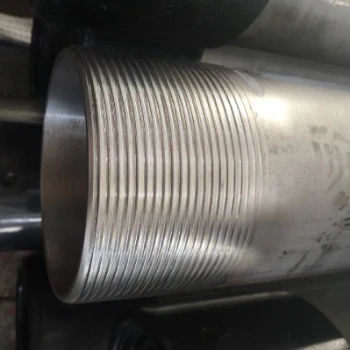- Afrikaans
- Albanian
- Amharic
- Arabic
- Armenian
- Azerbaijani
- Basque
- Belarusian
- Bengali
- Bosnian
- Bulgarian
- Catalan
- Cebuano
- Corsican
- Croatian
- Czech
- Danish
- Dutch
- English
- Esperanto
- Estonian
- Finnish
- French
- Frisian
- Galician
- Georgian
- German
- Greek
- Gujarati
- Haitian Creole
- hausa
- hawaiian
- Hebrew
- Hindi
- Miao
- Hungarian
- Icelandic
- igbo
- Indonesian
- irish
- Italian
- Japanese
- Javanese
- Kannada
- kazakh
- Khmer
- Rwandese
- Korean
- Kurdish
- Kyrgyz
- Lao
- Latin
- Latvian
- Lithuanian
- Luxembourgish
- Macedonian
- Malgashi
- Malay
- Malayalam
- Maltese
- Maori
- Marathi
- Mongolian
- Myanmar
- Nepali
- Norwegian
- Norwegian
- Occitan
- Pashto
- Persian
- Polish
- Portuguese
- Punjabi
- Romanian
- Russian
- Samoan
- Scottish Gaelic
- Serbian
- Sesotho
- Shona
- Sindhi
- Sinhala
- Slovak
- Slovenian
- Somali
- Spanish
- Sundanese
- Swahili
- Swedish
- Tagalog
- Tajik
- Tamil
- Tatar
- Telugu
- Thai
- Turkish
- Turkmen
- Ukrainian
- Urdu
- Uighur
- Uzbek
- Vietnamese
- Welsh
- Bantu
- Yiddish
- Yoruba
- Zulu
tubing and casing
Understanding Tubing and Casing in Oil and Gas Production
In the oil and gas industry, the terms tubing and casing refer to essential components of drilling and production operations. These two types of piping systems serve distinct purposes but are crucial in ensuring that hydrocarbon resources are extracted efficiently and safely from underground reservoirs. This article delves into the differences, functionalities, and importance of tubing and casing to provide a comprehensive understanding for those new to the industry or seeking to expand their knowledge.
What is Casing?
Casing is a series of steel pipes installed in the borehole after drilling has been completed. Its primary purpose is to provide structural integrity to the wellbore, preventing collapses and protecting the surrounding geological formations. Casing also isolates the various pressure zones encountered during drilling, ensuring that fluids from different formations do not mix and compromise the integrity of the well.
There are generally several types of casing used in drilling operations
1. Surface Casing This is the first set of casing installed in a well. Its main purpose is to protect freshwater aquifers and provide stability to the upper portion of the wellbore.
2. Intermediate Casing This type is installed after the surface casing and is used to provide additional support and isolation between formations.
3. Production Casing The production casing is the final layer installed before the production phase begins. It allows for the necessary production of hydrocarbons while maintaining pressure and safety.
Casing is essential not only for the physical stability of the well but also for environmental protection, ensuring that drilling fluids and methane do not escape into surrounding environments.
What is Tubing?
Tubing, on the other hand, is the smaller diameter pipe run inside the casing after the drilling and casing processes are complete. It is primarily used for the actual production phase, transporting oil, gas, or other fluids from the reservoir to the surface. Tubing systems are designed to withstand the pressure conditions of the production environment, and they must be strong enough to handle the corrosive nature of the fluids being transported.
There are several factors that influence the choice of tubing materials and designs, including
tubing and casing

1. Pressure and Temperature The tubing must be capable of handling the pressures encountered downhole, which can sometimes exceed several thousand psi. Furthermore, variations in temperature can influence the material’s integrity.
2. Fluid Composition The type of fluid being produced—whether it’s crude oil, gas, or water—will impact the selection of tubing materials due to different corrosive properties.
3. Production Rates High production rates may require larger diameter tubing to accommodate the flow of hydrocarbons without significant pressure drops.
The Importance of Tubing and Casing
The correct installation and maintenance of tubing and casing are vital for several reasons
1. Safety Properly functioning tubing and casing systems help prevent blowouts and other dangerous incidents during drilling and production, thus protecting the lives of workers and surrounding communities.
2. Efficiency An optimal tubing and casing design can enhance production rates and improve the overall recovery of hydrocarbons from a reservoir.
3. Environmental Protection By isolating different pressure zones and safeguarding freshwater sources, casing systems play a crucial role in minimizing the environmental impacts of oil and gas operations.
4. Cost-effectiveness Although the initial investment in high-quality casing and tubing can be significant, their durability and reliability lead to reduced losses and maintenance costs in the long run.
Conclusion
In summary, tubing and casing are critical components of oil and gas production. While casing provides structural integrity and isolation for the wellbore, tubing enables the efficient transportation of hydrocarbons from the reservoir to the surface. Both serve to enhance safety, efficiency, environmental protection, and cost-effectiveness in drilling and production operations. Understanding their roles is essential for anyone involved in the oil and gas industry, from engineers and geologists to safety professionals and environmental regulators. The industry's focus on both innovation and compliance will ensure that these systems continue to evolve in response to the ever-changing landscape of energy production.
-
Tubing Pup Joints: Essential Components for Oil and Gas OperationsNewsJul.10,2025
-
Pup Joints: Essential Components for Reliable Drilling OperationsNewsJul.10,2025
-
Pipe Couplings: Connecting Your World EfficientlyNewsJul.10,2025
-
Mastering Oilfield Operations with Quality Tubing and CasingNewsJul.10,2025
-
High-Quality Casing Couplings for Every NeedNewsJul.10,2025
-
Boost Your Drilling Efficiency with Premium Crossover Tools & Seating NipplesNewsJul.10,2025







